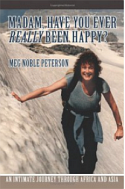The Vanderhof-Sycamore family had nothing on us, except that my Grandpa didn’t hold forth in the parlor and sanction the making of bombs in the basement.
Just in case you’re too young to have heard of You Can’t Take It with You, it’s a comedy in three acts written in 1936 by George S. Kaufman and Moss Hart. The Sycamore clan of Manhattan’s Upper West Side is not what one would call a typical family. It was a glorious collection of contented eccentrics…its members collected snakes, made fireworks, wrote but never finished plays, operated printing presses, and played the xylophone in their pursuit of self-fulfillment. Indeed, they were a zany, lovable group of screwballs.
There was something about the family’s peripatetic activity that resonated with me as I observed my active family engaging in a plethora of activities, endlessly. Many an evening I could find multiple activities going on in our living room, dining room, and sun porch. Martha, in appropriate tutu, took the spot by the front bay window as the strains of the Nutcracker fought over the sound of Robert’s stationery bike being pushed to ever-greater speeds as he competed with his brother, Tom, who stood at the ready in front of the solarium with a stopwatch, waiting for his crack at the record. On the sun porch Christopher struggled with Beethoven at the grand piano while I stood by, prepared to pounce on every mistake and inadvertently destroy any love of classical musical that might have lain dormant. In the dining room Cary was working on a science project, drawing the life of a cell from its inception to its maturity on large poster boards laid out on the table. Paint dishes were everywhere.
Through it all Glen slept on the couch with the newspaper over his face and a drink at the ready.
On one occasion my friend and photographer par excellence, Charlie McCue, happened by during the evening’s activities, hoping to do some work in the basement darkroom. He took one look around and said, “I know I’ve seen this play somewhere before! I think they’re doing a revival at the Papermill Playhouse in Millburn.” Yes, he was right!
There was plenty to keep my children busy, especially since television was not an option. And there would have been very little time for it, anyway. We didn’t even have a TV until Glen’s Uncle Walter died in 1959, just after Robert was born, and gave us a set. I have to admit that I did watch David Susskind’s Play of the Week while nursing Robert. And since it was good theater, in my estimation, I allowed any child who was so inclined to watch with me. This was before I learned my way around New York City and discovered Broadway. But in those early days the TV was off in a corner most of the time, where it couldn’t do any damage…until the time that I was introduced to the game show, Camouflage.
I had been talked into being a contestant by my friend, Coralie Gross, an associate producer of several New York City game shows. This was in the early days of TV, during the aftermath of the Van Doren quiz show scandals of the late 1950’s. Producers were on edge, and a great deal of effort was being made to convince the public that all subsequent programs were on the up and up. Camouflage was pretty straight-forward and the questions easy. When you answered correctly, you got a chance to see the picture on the screen, and pick out some object hidden within its context, like a doll, a pony, a shoe, a hat, a paint brush. Only the discerning eye could pick the object out of the general chaos of the picture. But this was similar to numerous such games I had “played” with my children as we were reading Highlights Magazine when they were growing up. I had developed that “discerning eye,” and become quite an expert in finding hidden minutiae. Now, the only problem was to figure out how to beat your opponents to the draw, and get to the picture first!
Finally, something clicked! I noticed that the true button was on the left and the false on the right, the opposite of how I, as a right-handed person, would have automatically responded. I asked Coralie why. “Oh, George, who set it up, is left-handed. It confused me at first as well.”
Here was the key. I practiced, assiduously, over the next week, slapping my hands on the table as I chanted: true… left; false…right. True, left, false, right. True, left, false, right. I even made a mantra of it for my children to sing. I was ready!
When I was waiting in the TV studio for the show to begin, I had a great time chuckling at the strict rules applied to make sure we didn’t find out any answers to the questions on the upcoming show. They even posted a guard at the entrance to the toilet. Hilarious! Still, the mood when the show began was casual, and when I was introduced as a contestant and the mother of five, the host asked me if I wanted to say anything to my children.
“Yes,” I replied. “Robert, take your dirty shoes off the couch!”
This produced the best laugh of the day, and when I returned home, the first. thing out of the kids’ mouths was, “He did it! Robbie jumped right down, like magic.”
When the show began, the first question out of the box was a real killer: “True or false, Jackie is the president’s daughter.” Down went my right hand and I was off to the races.
I ended up winning a brand-new Pontiac Bonneville station wagon, a spinet piano, a slew of valuable jazz records, and $10,000 worth of goodies. Can you believe it?
Years later there were two shows we watched regularly: Laugh In, because I liked it, and Mission Impossible, because my husband and the kids liked it. We were coming along….
After I had helped several friends do extremely well on Camouflage by sharing my brilliant strategy…easy questions and quick true/false reflexes, I helped Coralie with a few more shows and then moved on to my first love…theater. Yes, I could be accused of being a bit of a snob as well as a theater addict, the latter condition being alive and well even today.
Several Wednesdays, when the children were at school, I was known to drive on old Route 22 into New York City from Murray Hill, NJ, through the Lincoln Tunnel, grab a $4.50 matinee ticket at the discount booth on Broadway and 47th Street, see a show, and return in time to make dinner. A neighborhood teenager watched the children after school for 35 cents an hour, so I could do the whole thing for under ten dollars, tolls and parking included. At that time such greats as Alan Arkin, Eli Wallach, Anne Jackson, Anne Bancroft, Coleen Dewhurst, James Earl Jones, Barry Nelson, and Barbara Bel Geddes were just getting started. I couldn’t fathom why most husbands in our neighborhood forbade, yes, forbade their wives from driving down Route 22 to New York City. They felt it was too dangerous (for the ladies). Let’s hear it for my forward-thinking husband! And God help him if he had tried to stop me. He knew better!

